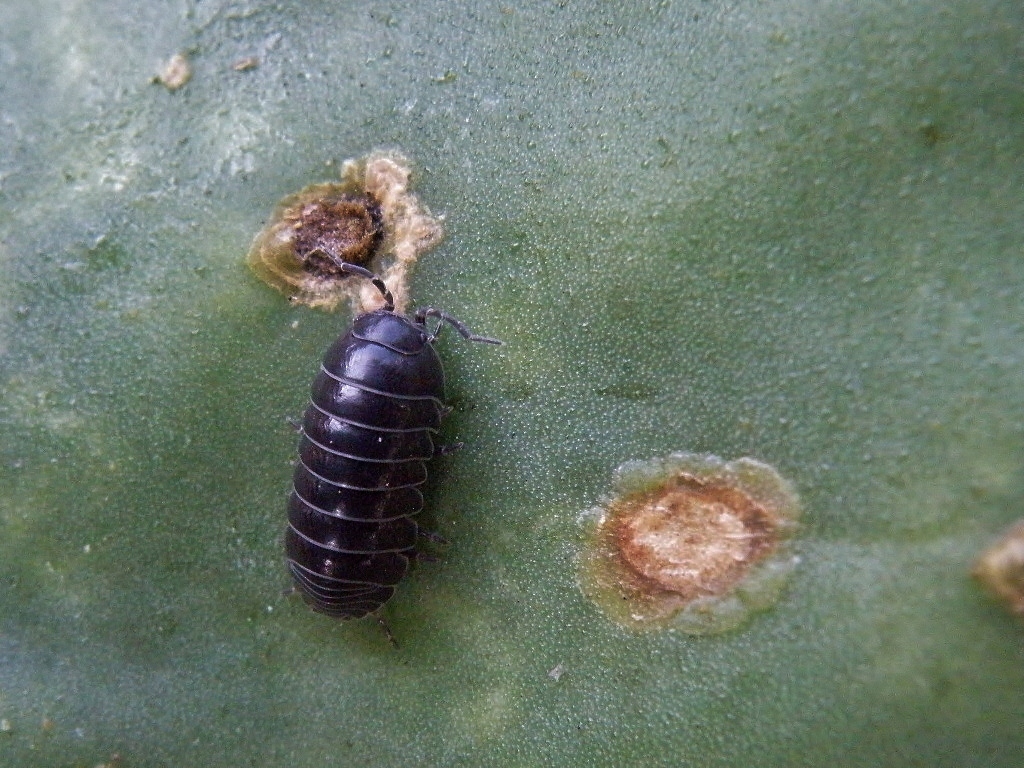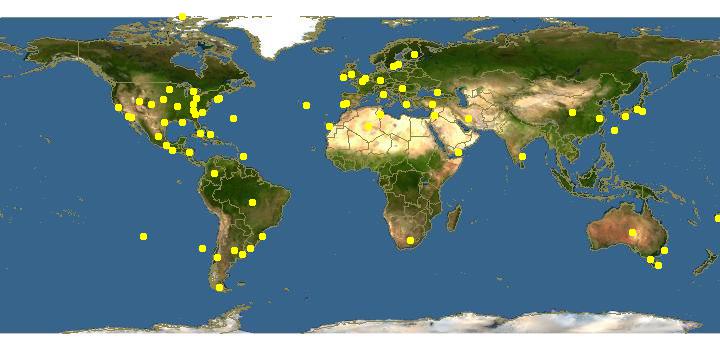A.vulgare's Habitat: A Little Bit of Everywhere
Armadillidium vulgare is classified under the order Isopoda,
which are the only crustaceans to have successfully transitioned
from aquatic to terrestrial environments (Miller and Cameron 1983).
A.vulgare originates from the moist Mediterranean, but has
spread throughout the world via human activity (Schmalfuss 2003).
Most commonly, it is found in the grasslands and forests of North
America and Europe, where conditions are favorable due to seasons,
which cause a cycle of decomposition as many plants grow and die.
However, they can be found virtually worldwide, as demonstrated by
the map above. They have a maximum lifespan of approximately four
years, but on average most live for only two (Paris and Pitelka
1962). However, because A.vulgare is so widespread, it is
suggested that many life history modifications came as a result of
local environments (Miller and Cameron 1983). Therefore, habitat
condition information varies depending upon which geographical
location the organism resides in.

A. vulgare is primarily a decomposer and can be
found commonly
under rocks, logs, in soil, and in other damp,
dark areas. The organism is nocturnal, remaining in its
dark habitat until the temperature drops and the sun sets. This is
mainly due to its pleopodal (gill-like) lungs unique to Crustaceans
that require water in order to breathe, and the lack of a cuticle
layer to keep internal water from escaping (Hadley 1994; Csoka et
al.2013). A. vulgare must
therefore avoid warm temperatures and sunlight because they
would risk losing water that is crucial to survival. See
Form and Function for more information
on A. vulgare's unique body plan.
During winter and early spring, A. vulgare lives
mainly in the top layers of soil that are moist from snow and
rainfall. In opposition, during warmer months from spring to
fall, the organism moves vertically in the soil much more
frequently to avoid the hot, dry weather on the surface (Paris
and Pitelka 1962). Most of the time spent on the surface
is in search of food, usually dead plant matter, decaying
organisms or fecal matter, which A. vulgare will
consume and decompose, thus aiding in
nutrient cycling.
One great beneficial interaction that decomposers provide for
humans is soil circulation, which leads to better crop growth
and therefore, greater amounts and better quality of food (for
more information, see Interactions page).
Return to Home Discover more on our Form and Function page

